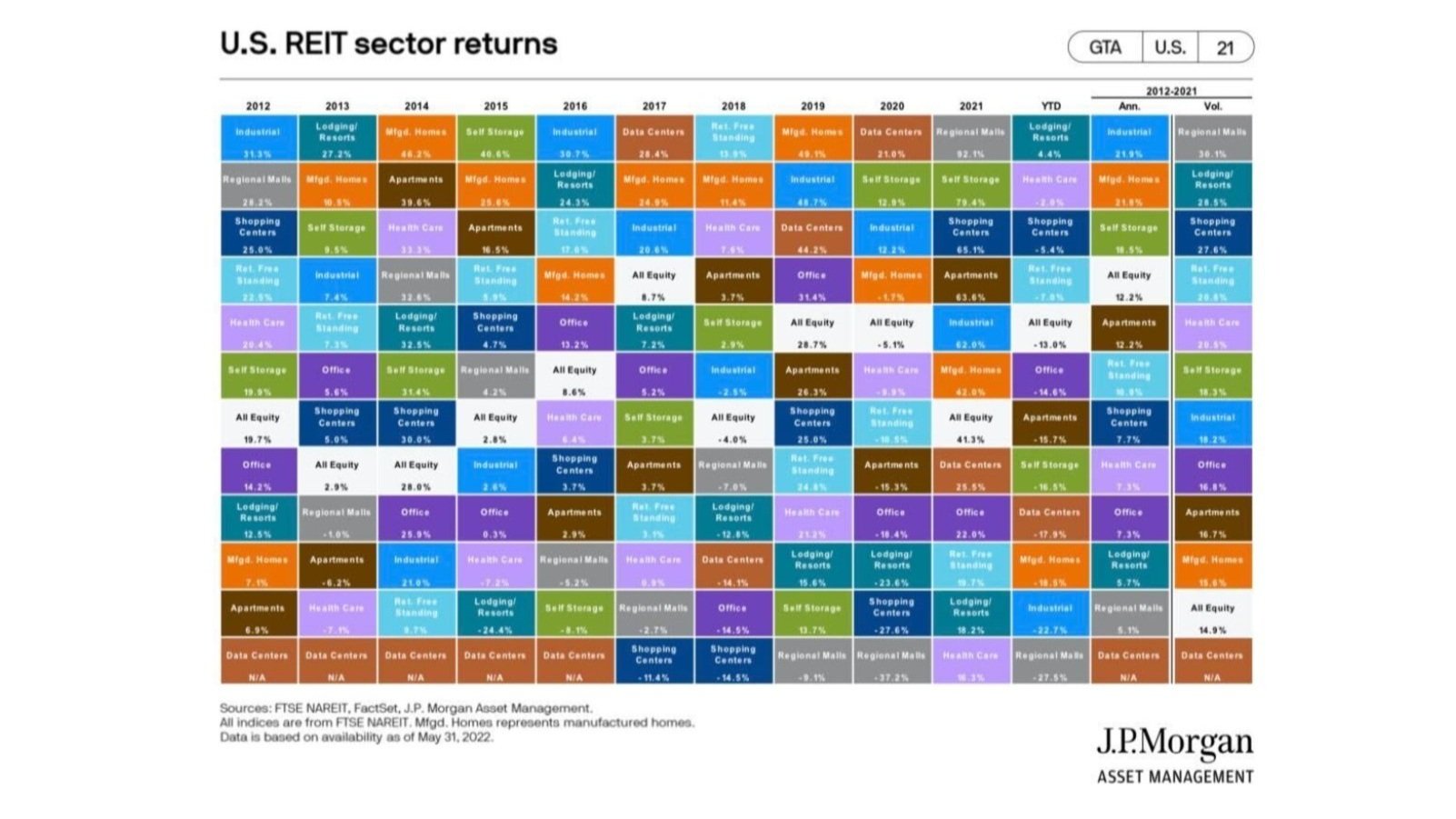What the public markets are telling us about the opportunity set for hospitality real estate
The first six months of the year were full of surprises for the public markets: inflation, the biggest sell-off in bonds in four decades, a plunge in tech stocks rivalling the early 2000s, the implosion of crypto, and the S&P 500 falling the most in the first half of a year since the 21% loss in 1970. Given that backdrop, I wanted to share what the public markets are telling us about the outlook for lodging/resorts real estate, the closest proxy to our asset class: boutique hotels and purpose-built short-term rentals.
J.P. Morgan Asset Management recently released the below quilt chart showing 1H2022 performance for each U.S. REIT sector compared to the previous year's performance. As you can see, the lodging/resorts sector (the teal tile) is leading all other sectors on a YTD basis. In fact, it is the only sector with positive performance for the 1st half of the year. This represents a stark contrast to the prior two years where lodging/resorts trailed darling sectors like self-storage, industrial, and multi-family real estate. So far this year, the public markets have punished those high-flying sectors, each one falling into the bottom half of real estate returns YTD.

The positive news is that the public markets share our view that the lodging/resorts sector is the best asset class in real estate to be in right now. The downside is we are yet to see any significant asset re-pricing in hospitality real estate, though we are starting to see signs.
On Tuesday, the WSJ reported on Blackstone ramping up its bet on the global travel and leisure market with a $6.3bn purchase of Crown Resorts Ltd., an Australian resort and casino company. While this is another sign that we are in an asset class that some of the most successful investors on the planet are increasing their exposure to, it was the last paragraph that drew my attention:
“While more resort owners have been listing their properties for sale to take advantage of a strong market, the recent stock-market selloff and rising interest rates threaten to undercut investor demand.”
As we prepare to acquire assets opportunistically over the coming months and quarters, this is what we are looking for. With demand drying up, we expect prices to fall, and well-capitalized owners and operators - like Stomp Capital - will have ample opportunities to generate attractive risk-adjusted returns for their LPs.
Be the first to know
Join our mailing list to learn more about Stomp Capital investing opportunities

